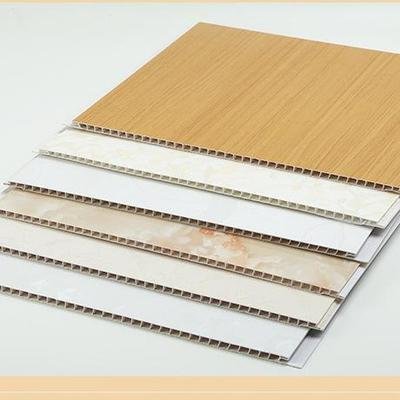Innovative Uses of Oxidized Polyethylene Wax in Various Industries
Release time: 2025-07-07
Innovative Uses of Oxidized Polyethylene Wax in Various Industries
Oxidized polyethylene wax (OPE wax) has emerged as a game-changing material in numerous industries, offering unique properties that enhance product performance and production efficiency. As manufacturers seek versatile solutions to improve their products, the innovative applications of OPE wax have garnered attention in fields such as coatings, plastics, rubber, and lubricants. This article delves into the diverse uses of oxidized polyethylene wax, examining its benefits, properties, and future potential.
Table of Contents
- 1. Introduction to Oxidized Polyethylene Wax
- 2. Key Properties of Oxidized Polyethylene Wax
- 3. Innovative Uses in Coatings
- 4. Applications in Plastics Manufacturing
- 5. Role in Rubber Production
- 6. Enhancements in Lubricants
- 7. Uses in Cosmetics and Personal Care
- 8. The Future of Oxidized Polyethylene Wax
- 9. Frequently Asked Questions
- 10. Conclusion
1. Introduction to Oxidized Polyethylene Wax
Oxidized polyethylene wax is a high-performance polymer that results from the controlled oxidation of polyethylene wax. This specialized wax features a unique molecular structure that imparts a variety of properties, making it suitable for multiple applications. We find its significance increasing across industries, particularly due to its ability to modify surface properties, improve adhesion, and enhance the overall quality of end products.
As industries continue to innovate, the demand for materials that can meet specific performance criteria is on the rise. Oxidized polyethylene wax stands out due to its compatibility with a wide range of materials, allowing manufacturers to create products that meet the ever-evolving demands of consumers.
2. Key Properties of Oxidized Polyethylene Wax
Understanding the properties of oxidized polyethylene wax is crucial for its application in various industries. Some key characteristics include:
2.1 High Melting Point
OPE wax exhibits a high melting point, making it stable under various temperature conditions. This property allows it to maintain its integrity during processing and end-use applications.
2.2 Excellent Lubrication Properties
One of the standout features of oxidized polyethylene wax is its exceptional lubrication properties. It acts as a lubricant in various formulations, enhancing flow and reducing friction.
2.3 Surface Modifying Agent
OPE wax serves as a surface modifier, improving the wetting and adhesion properties of coatings and other products. This characteristic is particularly beneficial in enhancing the performance of paint and adhesive formulations.
2.4 Resistance to Chemicals
The chemical resistance of oxidized polyethylene wax makes it suitable for applications in harsh environments, where exposure to various chemicals may compromise the integrity of other materials.
3. Innovative Uses in Coatings
The coatings industry is one of the primary beneficiaries of oxidized polyethylene wax. Its unique properties contribute to several applications:
3.1 Improved Surface Finish
In coatings, OPE wax enhances surface smoothness and gloss. Its incorporation in paint formulations can lead to a superior finish, making products more aesthetically appealing.
3.2 Enhanced Durability
Oxidized polyethylene wax improves the durability of coatings, providing resistance against scratches, abrasion, and environmental factors. This longevity is essential for applications in automotive and architectural coatings.
3.3 Low Friction Coatings
In specific applications, OPE wax is used to develop low-friction coatings. These coatings reduce drag and improve the performance of mechanical parts, such as in automotive or industrial settings.
4. Applications in Plastics Manufacturing
The versatility of oxidized polyethylene wax extends to the plastics industry, where its properties can be harnessed in various ways:
4.1 Processing Aid
OPE wax functions as a processing aid in the manufacturing of plastic products. It improves the flow of polymers during processing, leading to better dispersion and reduced energy consumption.
4.2 Enhancing Polymer Properties
By incorporating OPE wax into plastic formulations, manufacturers can enhance properties like impact resistance and flexibility. This modification allows for the creation of high-performance plastic products.
4.3 Anti-blocking Agent
Oxidized polyethylene wax serves effectively as an anti-blocking agent in plastic films and sheets. It prevents sheets from sticking together during storage and handling, ensuring functional integrity.
5. Role in Rubber Production
In the rubber industry, oxidized polyethylene wax plays a vital role in improving product quality and performance:
5.1 Processing Efficiency
OPE wax acts as a processing aid in rubber compounding, enhancing flow properties and reducing viscosity. This efficiency contributes to lower energy costs during production.
5.2 Improved Release Properties
The addition of oxidized polyethylene wax to rubber formulations enhances demolding and release properties. This feature is critical in ensuring the efficient production of rubber components.
5.3 Enhanced Surface Finish
Using OPE wax in rubber compounds improves surface aesthetics, providing a smoother finish that is desirable in various applications, including automotive and consumer goods.
6. Enhancements in Lubricants
The lubricant industry has also embraced the advantages of oxidized polyethylene wax, leading to innovative formulations:
6.1 Multi-functional Additive
OPE wax is often used as a multi-functional additive in lubricant formulations. It enhances viscosity, stability, and lubricity, contributing to improved performance under varying conditions.
6.2 Extended Service Life
Incorporating oxidized polyethylene wax into lubricants can extend their service life, reducing the frequency of necessary maintenance and contributing to overall equipment reliability.
6.3 Temperature Stability
The high melting point and thermal stability of OPE wax make it suitable for use in high-temperature lubricants, ensuring consistent performance in demanding applications.
7. Uses in Cosmetics and Personal Care
The cosmetics industry has also found innovative uses for oxidized polyethylene wax, enhancing product formulations:
7.1 Emollient Properties
OPE wax acts as an emollient in cosmetics, providing a smooth texture and enhancing the application of creams and lotions.
7.2 Thickening Agent
In formulations, oxidized polyethylene wax serves as a thickening agent, allowing manufacturers to achieve desired viscosity levels while improving the stability of creams and gels.
7.3 Film-Forming Agent
The wax can create a protective film on the skin when used in cosmetics, offering benefits like moisture retention and enhanced wear time for products like lipstick and foundation.
8. The Future of Oxidized Polyethylene Wax
The future of oxidized polyethylene wax appears promising as industries continue to explore innovative applications. Ongoing research and development may lead to new formulations and uses that further leverage its unique properties.
As sustainability becomes a focal point for many industries, OPE wax's potential for incorporation into eco-friendly products may also gain traction. Manufacturers are likely to experiment with bio-based alternatives, promoting a greener approach while maintaining performance standards.
9. Frequently Asked Questions
9.1 What is oxidized polyethylene wax?
Oxidized polyethylene wax is a polymer derived from the controlled oxidation of polyethylene wax, known for its unique properties that enhance product performance across various industries.
9.2 How is OPE wax used in coatings?
In coatings, OPE wax improves surface finish, enhances durability, and can be formulated into low-friction coatings for mechanical applications.
9.3 Can oxidized polyethylene wax be used in cosmetics?
Yes, OPE wax is utilized in cosmetics as an emollient, thickening agent, and film-forming agent, enhancing the texture and performance of beauty products.
9.4 Is OPE wax environmentally friendly?
While oxidized polyethylene wax is derived from polyethylene, ongoing research is exploring the development of bio-based alternatives to promote sustainability.
9.5 What are the benefits of using OPE wax in lubricants?
In lubricants, OPE wax improves viscosity, stability, and lubricity, extending service life and ensuring reliable performance in demanding conditions.
10. Conclusion
Oxidized polyethylene wax has proven to be a versatile and valuable material across various industries, including coatings, plastics, rubber, lubricants, and cosmetics. Its unique properties, such as high melting point, exceptional lubrication, and chemical resistance, contribute to the development of innovative products that meet the growing demands of consumers and industry standards.
As we look to the future, the potential for oxidized polyethylene wax to play a critical role in sustainable solutions presents exciting opportunities for manufacturers. By leveraging its benefits, industries can enhance their offerings, improve efficiency, and drive innovation in product development. Embracing the unique characteristics of oxidized polyethylene wax is not just a trend—it's a pathway to a more efficient and effective industrial landscape.
 sales@feihengchem.com
sales@feihengchem.com
 +8615665855919
+8615665855919 中文
中文 English
English España
España











